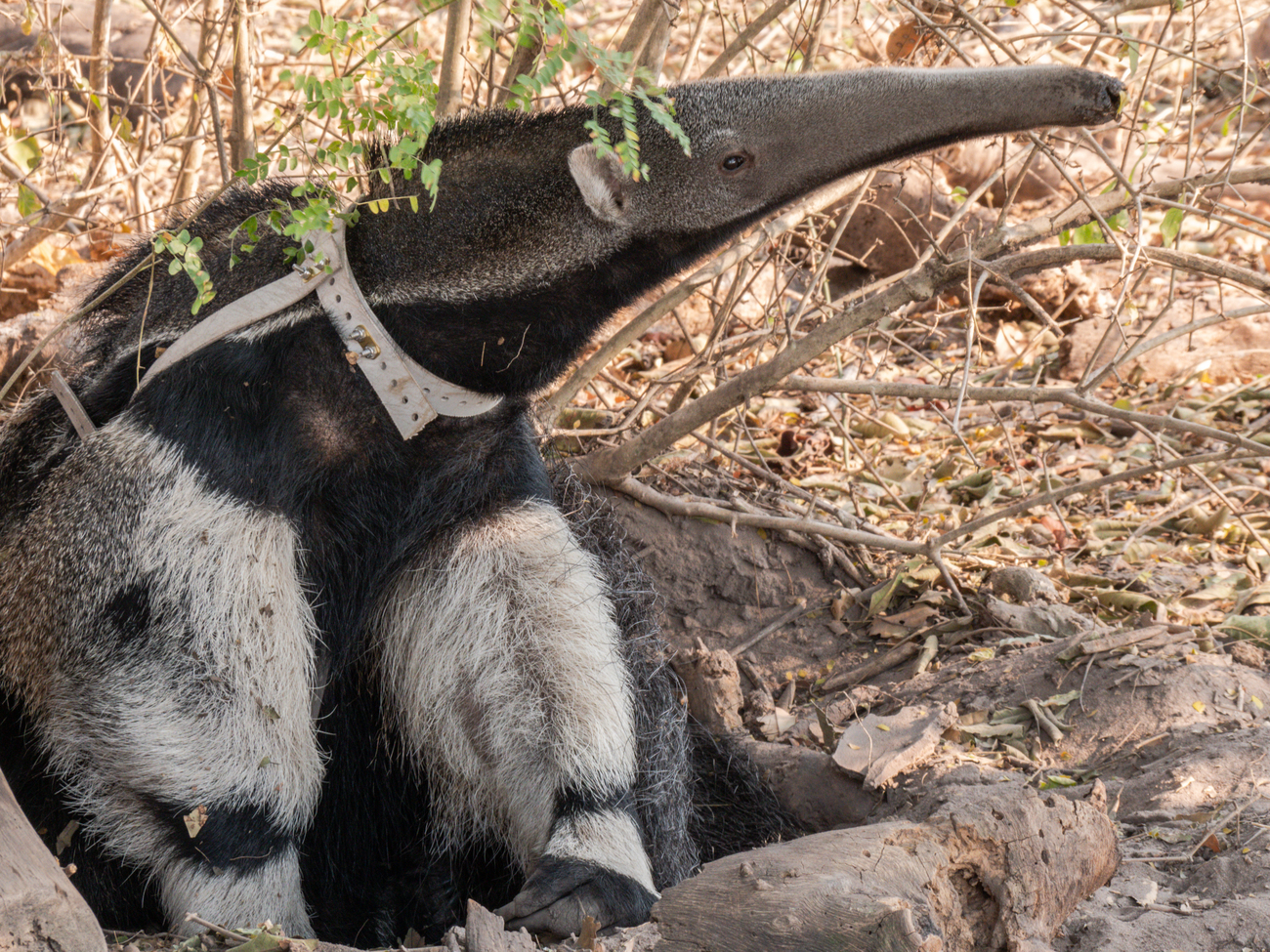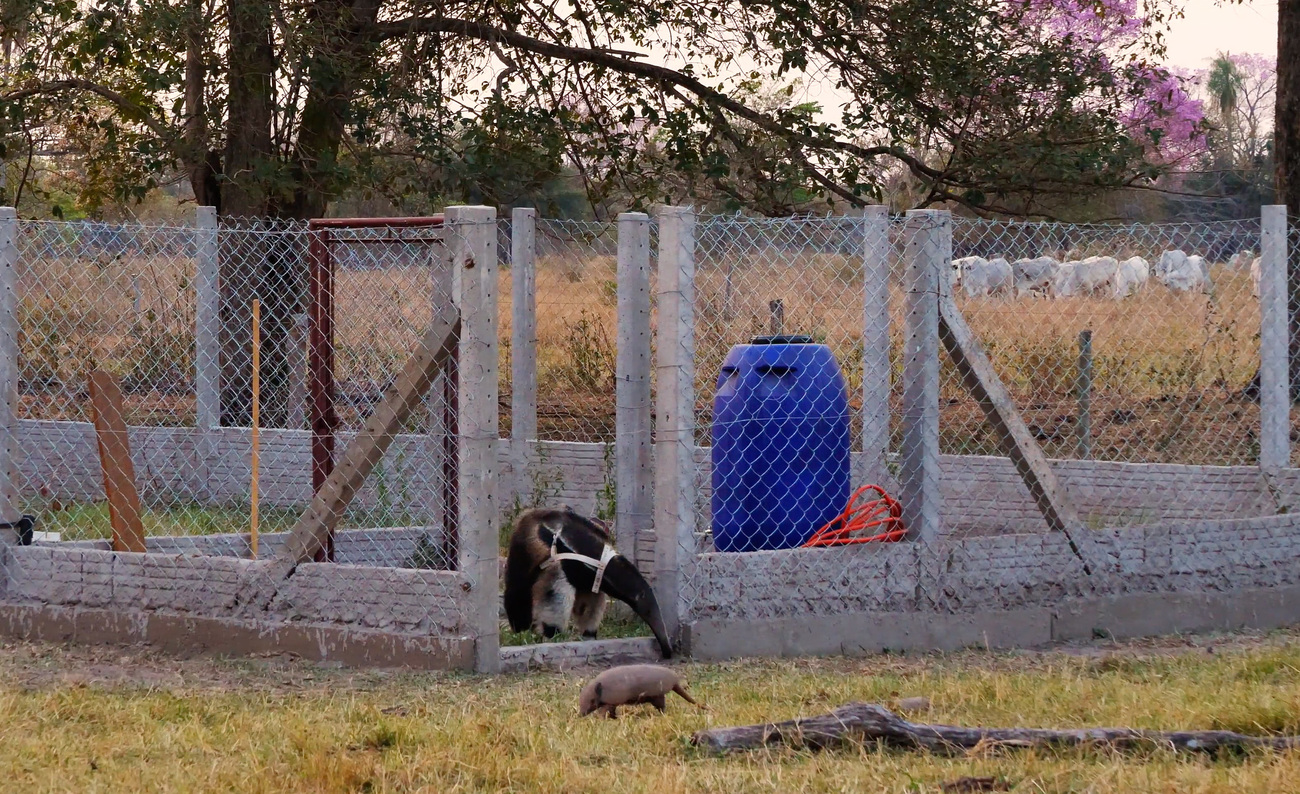Meet an orphaned giant anteater released back to the wild after Brazil’s wildfires
Meet an orphaned giant anteater released back to the wild after Brazil’s wildfires
In 2020, wildfires burned through 30% (approximately 4.5 million hectares) of the world’s largest tropical wetland—Brazil's Pantanal region. The blaze killed millions of animals, including many of the region’s iconic giant anteaters, aka tamanduas.
In the aftermath of the deadly fires, IFAW (International Fund for Animal Welfare) supported the establishment of Tamandua Institute’s Orphans of Fire project, dedicated to the rescue of orphaned giant anteaters.
Project staff rescued six young giant anteaters who had lost their mothers in the fires. The first task for Orphans of Fire was to help the pups gain weight, experience natural bonding and learn to survive on their own, all in the absence of their mothers, who the pups would normally depend on for their first 10 months of life. Next, Orphans of Fire would release the orphans back into the wild. If successful, this would be the first-known release of giant anteaters rehabilitated from such a young age.
A curious giant anteater named Tupã
Tupã was found alone in a residential area of Campo Grande near the wildfires in June 2020. He was around a month old and remained at a local rescue facility until he could be transferred to the Orphans of Fire center. He was an active, curious, strong and territorial animal who liked to explore his environment but was also wary of strange objects and intruders in his space.
Orphans of Fire staff bottle-fed Tupã and the rest of the rescued pups four to six times each day, using supplements formulated by anteater specialists in the region. They were also careful to minimize human contact so the pups wouldn’t become dependent on their caregivers, which could hinder their ability to survive in the wild.
By 11 months of age, Tupã had grown to be the largest of the cubs and stopped nursing. He was ready to begin a multi-stage journey to slowly reintegrate into his natural habitat.

Prior to his release, staff needed to have confidence that Tupã would be able to feed himself, defend himself from predators, and adjust to his new surroundings. Once they were sure that he was ready, Tupã spent 40 days in a protective enclosure—one of several that IFAW helped to purchase and set up—to acclimate to his new surroundings.
Back to the wild
At 13 months old, weighing 27 kg (60 ibs), Tupã had grown into a strong and skilled adult. After 10 months in rehabilitation, he was large enough, strong enough, and had learned all the necessary skills to survive in the wild.
For the team who cared for him, it was a bittersweet moment to witness his independence. Tupã was placed in a large soft release enclosure—a semi-enclosed environment where he could explore his natural habitat but could also return at any time for food and safety. A soft release allows a gradual transition back to the wild.
And Tupã didn’t leave alone! Toward the end of the day, he decided to venture out of the enclosure with an armadillo pal.

Keeping tabs on Tupã
Tupã is the youngest-known giant anteater to be released back into the wild after being rehabilitated. It’s only the first step of a massive project, as there are still five giant anteaters being cared for by The Orphans of Fire project.
Prior to his release, Tupã was fitted with a GPS harness to track his movements. Telemetry allows experts to track where he goes and how he’s managing on his own. Post-release monitoring will continue for at least two years, to ensure that everything is going to plan.
The work of the Orphans of Fire project, carried out by the Tamanduá Institute, is an indispensable effort to help preserve the Pantanal region. “It is not only about the giant anteater species,” says Flavia Miranda, President and Founder of the Institute. “They are the orphans of fire. The giant anteater for us is a symbol of the Pantanal. Our symbol here of overcoming.”
One year later
In the year since his release, Tupã has thrived in the wild. In June 2022, the team observed Tupã interacting with another wild anteater. They greeted, had a chat and sniffed one another before going their separate ways—in typical anteater fashion.
In late 2022, the Tamandua Institute will release two more giant anteaters, Venus and Joaquim (named for IFAW’s own Latin America regional director, Joaquin de la Torre Ponce). They will be the first giant anteaters rescued at under a month old to be rehabilitated and released back into the wild.
Related content
Our work can’t get done without you. Please give what you can to help animals thrive.